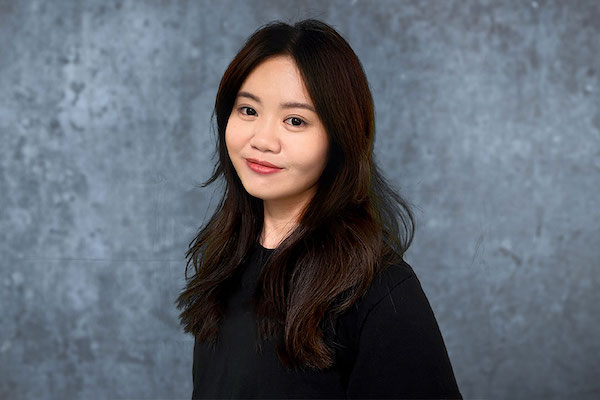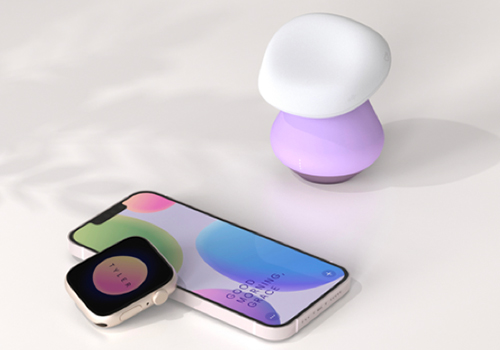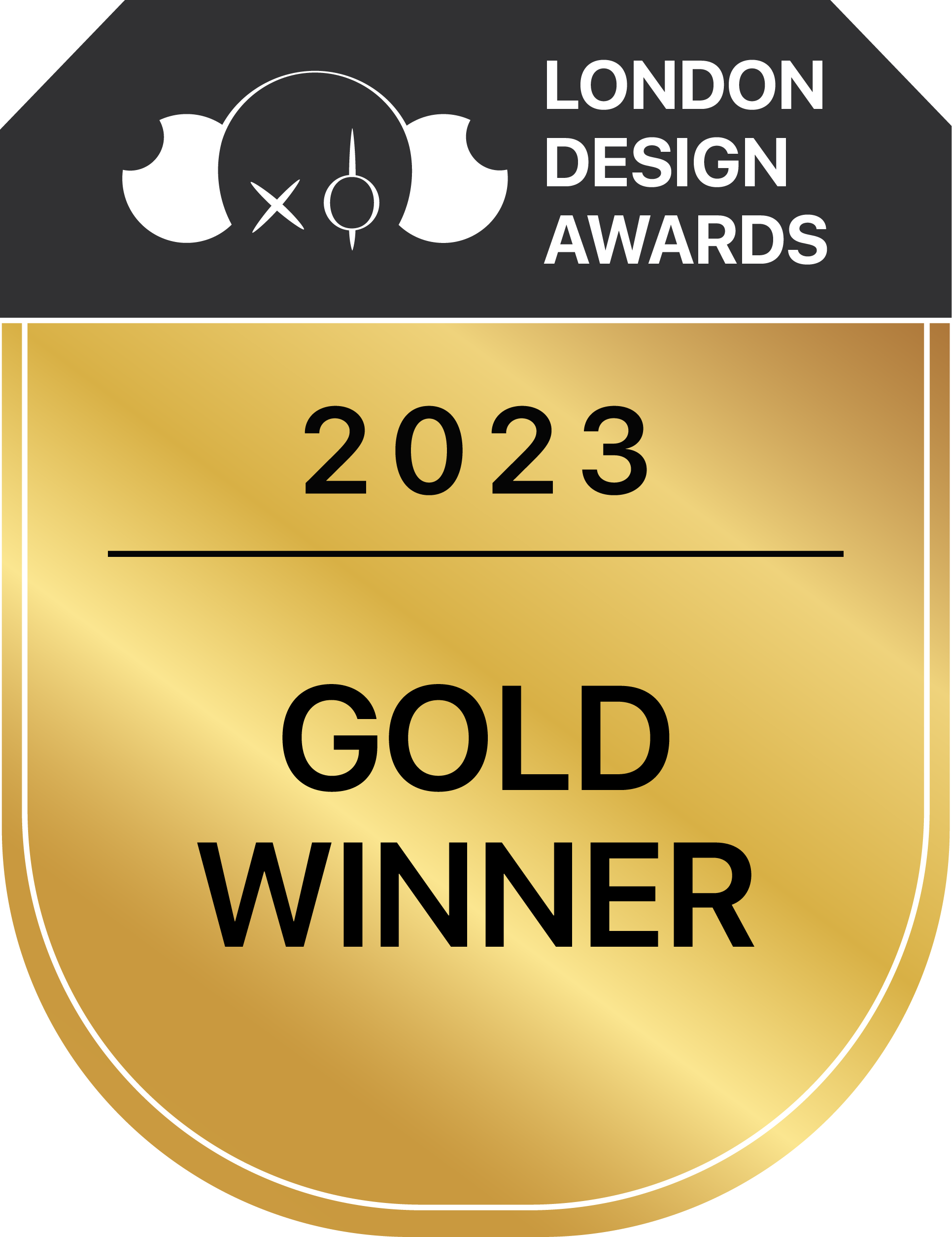
Sizhe Huang
1. Please give us a brief bio of yourself and your design background.
I'm a visionary in the design world, dedicated to advancing how users interact with technology in their daily lives. At the heart of my work with Lucid Motors, my goal is to integrate technology seamlessly into everyday scenarios, ensuring user interactions are both natural and enriching.
Educated in Industrial Design with a bachelor's degree and further honed by a Master
2. What made you become/why did you choose to become a designer/artist?
My journey into the realm of design began with the brushstrokes of my youth, where painting was not just a hobby but my primary language for expression. It was through these early experiences with art that I discovered the profound ability of visual aesthetics to communicate and evoke emotion.
As I grew, so did my curiosity, especially at the intersection of art and technology. This curiosity blossomed into a passion for exploring how these two fields could merge to forge innovative and meaningful creations.
My natural propensity for observation and my ability to listen deeply have always fueled my desire to make a difference through design. These qualities led me to pursue further education in design, where I dove into both the theoretical underpinnings and the practical application of creating solutions that enhance human experiences.
Stepping into the professional world post-graduation, my commitment to design deepened. I found a profound joy in collaborative efforts, working alongside talented individuals to bring visionary designs to fruition.
Our creations are more than just an amalgamation of beauty and technology; they are avenues through which we can significantly improve the fabric of everyday life. This is where I find my greatest fulfillment
3. Tell us more about your agency/company, job profile, and what you do.
I
4. What does “design” mean to you?
To me, "design" is an intricate dance of creativity, practicality, and understanding. It goes beyond the mere aesthetics of creating something that catches the eye; it's about devising solutions that touch the heart and meet real-world needs.
Design acts as a bridge, facilitating a meaningful conversation between those who create and those who experience, ensuring that every element serves a purpose, conveys a narrative, or addresses a challenge. It's the art of finding equilibrium where beauty and utility intersect, fostering innovation that feels as natural as it is groundbreaking.
Design, in its truest form, is about making a positive impact
5. To you, what makes a “good” design?
In my view, a "good" design seamlessly integrates into the daily rhythm of the user, presenting interactions that are both intuitive and enriching. It champions the user's needs at its core, marrying simplicity with innovation to create an experience that's not just functional but also captivating and memorable.
Furthermore, a hallmark of good design is its commitment to sustainability and inclusivity. It is essential that design practices are ethically sound and environmentally considerate, ensuring that the products and experiences we create are accessible to all and kind to the planet we share.
6. How did you come up with the idea for your award-winning design?
The genesis of my award-winning design is rooted in a process that balances structured strategy with the freedom of creative exploration, guided by the principles of the double-diamond approach. This method ensures that my designs are not just pioneering but also deeply attuned to the users' needs.
Unearthing insights: The journey begins with a deep dive into the problem space, where I engage in comprehensive user research. This phase is about peeling back the layers to understand the core issues users face, allowing me to empathise deeply with their situation and aspirations.
Conceptualisation: Armed with a rich tapestry of insights, the next step is to brainstorm and develop potential solutions. Here, I ensure that every idea is meticulously crafted to address the user pain points and expectations discovered earlier.
Bringing ideas to life: With a set of promising concepts at hand, I transition into the design phase. This involves evolving the ideas into detailed designs and tangible prototypes, ready for rigorous evaluation.
Iterative refinement: The testing phase is critical, involving user interactions with the prototypes to collect feedback. This feedback is a goldmine that informs further refinement and optimisation of the design.
Importantly, my approach to design is inherently iterative and responsive. It's a dynamic process of continuous learning and adaptation, ensuring the end solutions are always evolving and centred around the real and changing needs of users.
7. What was your main source of inspiration for this design?
Umi's design was born from a nuanced observation of the dichotomy in modern digital communication: Despite advanced technology, a sense of loneliness pervades.
This paradoxical situation, especially prevalent among the younger generation, sparked the initial concept. Research indicated that despite increased digital connectivity, there was an emotional disconnect, primarily due to the lack of meaningful, tactile interaction.
Reflecting on traditional forms of communication
8. Do you think your country and its cultural heritage has an impact on your design process?
The profound cultural heritage of China significantly informs my design process, infusing my work with a blend of tradition and innovation. Drawing inspiration from Taoist minimalism, I emphasise simplicity and functionality, where each element of my design serves a deliberate purpose, embodying the 'less is more' philosophy.
Additionally, the Confucian values of harmony and balance guide my efforts to create designs that not only facilitate seamless interaction between the user and the product but also foster interpersonal connections and societal well-being.
This approach allows me to craft solutions that are both aesthetically pleasing and deeply functional, ensuring they are in tune with both the timeless wisdom of my culture and the dynamic needs of the modern world.
9. Congratulations! As the winner of the London Design Awards, what does it mean to you and your company and team to receive this award distinction?
Receiving the London Design Awards is an immense honour that marks a significant milestone in our journey. This recognition is not just a testament to the relentless dedication, creativity, and innovative spirit that fuel our work but also a cause for jubilation and introspection.
It's incredibly gratifying to be acknowledged on a platform renowned for celebrating the pinnacle of design excellence, standing out among a cadre of exceptionally talented peers and groundbreaking projects.
This award symbolises more than just an achievement; it serves as a powerful reminder and an impetus to persist in pushing the envelope, venturing into new realms of design, and continuously striving to elevate user experiences and the broader design discipline. It validates the impact of our efforts and motivates us, as a team and company, to pursue our passion with even greater determination and enthusiasm.
10. Can you explain a bit about the winning work you entered into the London Design Awards, and why you chose to enter this project?
In today's digitally driven world, where technology often bridges distances but can leave emotional connections feeling cold, our project, Umi, seeks to redefine the essence of long-distance communication. Umi marries the tangible elements of the Pebble & Nest with a comprehensive digital experience accessible through both mobiles and watches, aiming to rekindle the warmth and intimacy often missing in modern communication.
The Pebble & Nest are more than just devices; they serve as personal totems that physically represent the bonds we share with our friends and family. These items can be touched, held, and cherished, offering a tangible connection in an increasingly virtual world.
Complemented by the Umi app, which extends this experience to mobile and wearable technology, the platform enables users to send virtual embraces and voice messages, fostering a sense of closeness and emotional depth regardless of physical distance.
Choosing to enter Umi into the 2023 London Design Awards was driven by a belief in its potential to revolutionise emotional connectivity in the digital era. This project is a testament to the power of human-centric design, integrating tactile, auditory, and visual elements to craft deeply meaningful interactions.
It represents not only a step forward in technological innovation but also an invitation to reconsider the emotional dimensions of our digital interactions. Our hope was to share this vision on a grand stage, sparking inspiration and encouraging a broader dialogue on the significance of emotional connection in design.
11. What were the main challenges you faced during the design process, and how did you overcome them?
The creation of Umi presented a series of complex challenges, each reflecting the intricate interplay between technology, human emotions, and user experiences.
Adaptability across diverse scenarios: One primary challenge was ensuring Umi's adaptability to a wide range of user environments and activities. Whether indoors or outdoors, in moments of quiet reflection or during physical activity, it was crucial that Umi provided a sense of connection and companionship.
Our design process was deeply user-centric, aimed at mitigating feelings of isolation by offering comfort and presence in the exact moments they were needed most.
Preserving emotional authenticity: Another major obstacle was the translation of genuine emotions into a digital format without diminishing their intensity or authenticity.
The goal with Umi was to create a platform where emotions could be expressed and felt in their truest form, bridging the gap between the abstract nature of feelings and the physical world of human interaction. Achieving this required delicate design considerations to ensure that these emotional exchanges felt natural and heartfelt.
Balancing tactile and visual elements: The final hurdle was achieving a perfect balance between tactile interactions and visual feedback. Umi is designed to be more than just a physical or visual tool; it's an experience that harmonises touch with technology.
This balance was critical in providing a comprehensive experience that felt warm and genuine, without favouring one mode of interaction over the other. The challenge lay in blending these elements in such a way that users experienced a seamless and enriching connection.
12. How do you think winning this award will impact your future as a designer?
Winning the award has marked a transformative chapter in my professional journey as a designer. This accolade has not just validated the caliber of my work but significantly boosted my profile within the design world, paving the way for fresh collaborations and ventures.
It has spurred a period of deep reflection and refinement in my approach, encouraging a relentless pursuit of innovation. The award serves as both a recognition of what has been accomplished and a beacon guiding my path towards further achievements and exploration in design.
13. What are your top three (3) favorite things about the design industry?
My admiration for the design industry is deeply rooted in its creativity, its capacity for impact, and its dynamic nature.
Creativity unleashed: At the forefront is the exhilarating realm of creativity that design offers. It
14. What sets your design apart from others in the same category?
Umi distinguishes itself in the digital communication landscape through its innovative approach to fostering tangible connections in an increasingly virtual world. It breaks new ground by transforming abstract emotions into physical interactions and seamlessly integrating digital gestures with real-world sensations.
Tangible emotion: Umi transcends traditional digital communication barriers by materialising emotions through the Pebble & Nest. This innovation allows for a profound emotional exchange that goes beyond text or emojis, offering a physical manifestation of affection and presence. It
15. Where do you see the evolution of design industry going over the next 5-10 years?
Looking ahead, the design industry is poised for transformative shifts, driven by sustainability, inclusivity, technological integration, and artificial intelligence.
Sustainability and circular design: The next decade will underscore the imperative for environmentally conscious design. Designers will increasingly lean towards sustainable practices, focusing on materials, manufacturing processes, and product lifecycle management that embrace circularity, minimising waste and promoting reuse and recycling.
Inclusive and universal design: There will be a heightened emphasis on creating designs that cater to everyone, breaking down barriers related to age, gender, ability, and background. The industry will evolve to ensure that products, environments, and digital platforms are universally accessible, fostering inclusivity at every level.
Seamless integration of digital and physical worlds: As technology advances, the distinction between digital and physical experiences will become even more nuanced. Augmented, virtual, and mixed realities will offer new canvases for designers to create immersive experiences that blend the tangible with the virtual, redefining how we interact with our surroundings.
Elevated role of artificial intelligence: AI's influence in design will significantly expand, streamlining operations and enhancing creativity. From automating mundane tasks to offering sophisticated design recommendations and forecasts, AI and generative design tools will become indispensable in crafting solutions that are both innovative and efficient.
16. What advice do you have for aspiring designers who want to create award-winning designs?
Focus on the user: Begin with a deep understanding of your audience. Dive into their world through thorough research and genuine empathy. The foundation of award-winning designs is their ability to resonate with users by addressing their real needs and enhancing their daily experiences.
Expand your toolkit: While having a niche is valuable, the ability to navigate across various disciplines can significantly enhance your design approach. Embrace learning opportunities in related areas such as coding, motion design, or even understanding business dynamics. This multidisciplinary approach not only enriches your designs but also prepares you to tackle a wide array of challenges.
17. What resources would you recommend to someone who wants to improve their skills in the design industry?
Coursera - Offer courses on a plethora of topics related to design, from beginner to advanced levels.
AIGA Eye on Design - Offers insightful articles about the world of design.
Design Matters Podcast with Debbie Millman - Interviews with industry leaders.
NNGroup (Nielsen Norman Group) - Offers evidence-based user experience (UX) research, training, and consulting.
18. Who has inspired you in your life and why?
Naoto Fukasawa's design philosophy, 'Design without Thought,' profoundly shapes my approach to design. His belief that exemplary designs blend so seamlessly into our lives they become nearly invisible has deeply influenced me.
This concept has driven me to prioritise simplicity and intuition in my work, crafting solutions that users can interact with naturally and effortlessly. Fukasawa's perspective has been a guiding light, reminding me that true design excellence lies in creating products that feel like extensions of our behaviors and environments, rather than obtrusive objects. His approach underscores the power of subtlety in design and the importance of creating experiences that resonate on an instinctual level with users.
19. What is your key to success? Any parting words of wisdom?
The cornerstone of my success is a trio of enduring curiosity, unwavering dedication, and profound empathy. Curiosity propels me to perpetually question, explore, and challenge the established norms, safeguarding against the stagnation of ideas.
Dedication fortifies my resolve, enabling me to navigate obstacles and meticulously polish my work to achieve a standard of excellence. Most importantly, empathy grounds me in the understanding that at the heart of design is human experience.
Success, in its truest form, is measured by the meaningful difference made in people's lives through our designs. These principles guide me not only in my professional journey but also in crafting designs that resonate deeply and positively with users.

